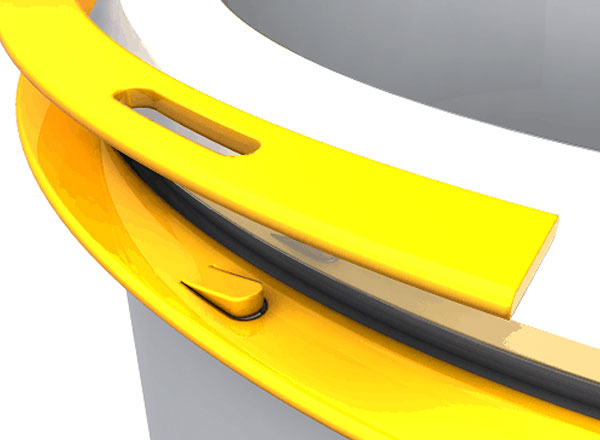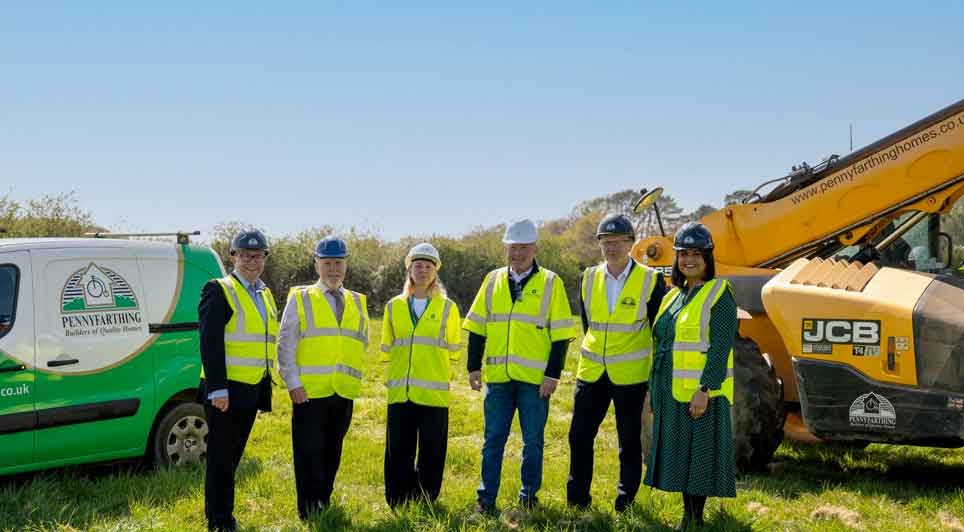TFC offers an array of standard retaining rings for different automotive applications. Selecting the appropriate ring requires an understanding of the application requirements, which includes thrust load, groove dimensions, and many others. If your application rotates at high speeds, the rotational capacity of the retaining ring will be important to consider.
When an application requires that the retaining ring rotates in an external groove, failure may occur when centrifugal forces are great enough to expand the ring so that it no longer clings in the groove. When this rotational capacity is exceeded, Smalley can help design a self-locking ring to increase the rotational capacity by ensuring that the ring continues to cling to the groove.
These rings have a tab that "lock" into a slot on the outside diameter or in the centre-line of the radial wall. This lock keeps the ring's diameter from expanding. In addition to preventing the ring from expanding, the self-locking feature can also help the ring to better withstand vibration, rapid acceleration, and degree of impact loading. Sometimes the self-locking feature is even used on internal retaining rings to help with vibration and impact loading, even though rotational capacity is not a concern.
Self-locking rings are often specified for transmission and gearbox applications. Rings are the main retention method within the assemblies to retain high speed rotating gears and bearings. These components are obviously critical to the function of the gearbox or transmission. This rotation can often exceed the rotational capacity for many retaining rings, and if a ring slips out of place, the entire assembly can fail, causing serious damage. With the technological advances of electric cars, the electric motors used to power the wheels are subjects to rapid acceleration, vibration, and of course high RPMs. A Smalley self-locking ring can be used to prevent damage or premature failures of the motors and/or their individual components.
Besides automotive applications, self-locking rings are used in many other designs, including aerospace and industrial. Smalley can also manufacture these rings in different materials depending on the environmental requirements, or with the locking mechanisms in different positions depending on your needs. Smalley engineers are ready to help you design the perfect self-locking retaining ring for your application contact them now to find out which self-locking rings will suit your automotive application.
Construction News
08/04/2019
Self-Locking Rings In Automotive Applications


17/04/2025
Willmott Dixon has been selected by Oldham Council to build a new Visitor Centre and Forestry Skills Centre at Northern Roots, the UK's largest urban farm and eco-park.
The development marks a major milestone in the transformation of 160 acres of green space at the heart of Oldham, part of the coun

17/04/2025
A groundbreaking ceremony has officially marked the commencement of construction for Versa, a state-of-the-art laboratory facility at King's Cross.
The project, which is being delivered by Morgan Sindall Construction, has been commissioned by Kadans Science Partner, a prominent European investor s

17/04/2025
A major milestone has been reached on Skanska's A428 improvement scheme, as the project team connected the new A428 and B1040 roads over a newly constructed bridge and opened it to traffic last weekend.
The achievement marks a crucial step forward in the project, enabling access to part of the main

17/04/2025
Our welfare unit hire division offers innovative ecowelfare units ready to be delivered nationwide and available in a range of configurations to accommodate 7, 12, or 15 persons with our most popular unit being our 12ft model fitted with advanced solar panels means there is no noise or vibrations f

17/04/2025
Huddersfield Station will temporarily close from Saturday 30 August to Monday 29 September 2025 to allow for a critical phase of engineering work as part of the Transpennine Route Upgrade (TRU).
The closure will enable extensive track and platform remodelling at the Grade I listed station, which ha

17/04/2025
Visitors to Mumbles over the Easter holidays can now enjoy the transformed promenade, as major upgrades under the Mumbles Coastal Protection Project near completion.
Contractors have begun laying a durable buff-coloured top surface, replacing the previously installed black Tarmac. The fresh finish

17/04/2025
Herefordshire Council has secured £1 million in funding from the government’s Public Sector Decarbonisation Scheme, to redevelop Hereford's Museum and Art Gallery into one of the most energy-efficient heritage public buildings in the UK.
The funding will be used to install a low carbon heating syst

17/04/2025
David Lloyd Leisure, Europe's leading health, fitness and wellness group, has submitted a planning application to Wirral Council for a new club at Wirral Waters.
The proposed club, set to create up to 100 permanent jobs upon completion, will be located at Peel Waters’ Bidston Dock site off Wallasey

16/04/2025
Pennyfarthing Homes has officially broken ground at Danes Park in New Milton, launching construction on a significant new residential development that will deliver 164 homes.
To mark the milestone, directors from Pennyfarthing Homes welcomed Councillor Steve Davies, Portfolio Holder for Housing and
16/04/2025
GMI Construction Group is celebrating the official opening of Dakota Newcastle, the North East's first Dakota Hotel, situated on Newcastle's Quayside.
The 118-room luxury boutique hotel, located at St Anne's Wharf, has welcomed its first guests and is poised to become a major addition to the region
 UK
UK Ireland
Ireland Scotland
Scotland London
London











